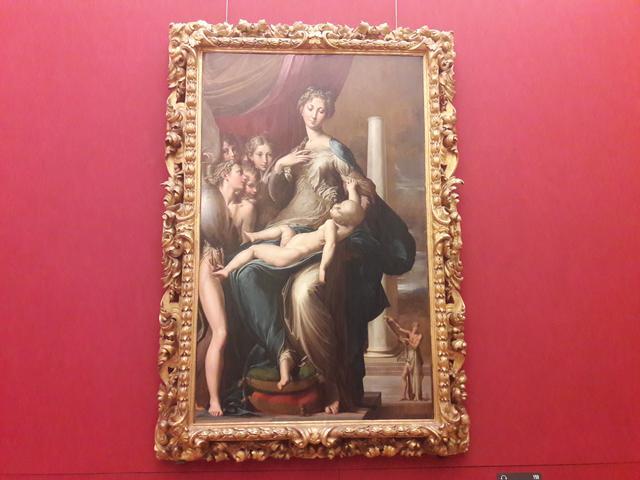The virgin with the long neck

The Madonna with the Long Neck also known as Madonna and Child with Angels and Saint Jerome, is an Italian Mannerist oil painting by Parmigianino, dating from 1535-1540, depicting Madonna and Child with Angels. The painting was begun in 1534 for the funerary chapel of Francesco Tagliaferri in Parma, but remained incomplete upon Parmigianino's death in 1540. Ferdinando de' Medici, Grand Prince of Tuscany, purchased it in 1698 and it was exhibited in the Uffizi from 1948 . .
Instead of distributing his figures in equal pairs on either side of the Virgin, he packed a crowd of jostling angels into a narrow corner and left the other side open to show the tall figure of the prophet, so reduced in size throughout the distance that barely reaches the knee of the Virgin. There can be no doubt, then, that if this is madness, there is a method to it. The painter wanted to be unorthodox. He wanted to show that the classical solution of perfect harmony is not the only conceivable solution... Parmigianino and all the artists of his time who deliberately sought to create something new and unexpected, even at the expense of the 'natural' beauty established by the great masters , were perhaps the first 'modern' artists
After a recent restoration of the painting, the unfinished face of an angel just below the Virgin's right elbow can be seen more clearly. Furthermore, the angel in the center of the bottom row now looks at the vase held by the angel to his right, in which the faint image of a cross can be seen. Before the restoration, this angel looked at the Christ child. The changes made during the restoration probably reflect the original paint, which must have been altered at some point in its history. The angel facing the viewer resembles Parmigianino's portrait of Antea.
© Tourblink